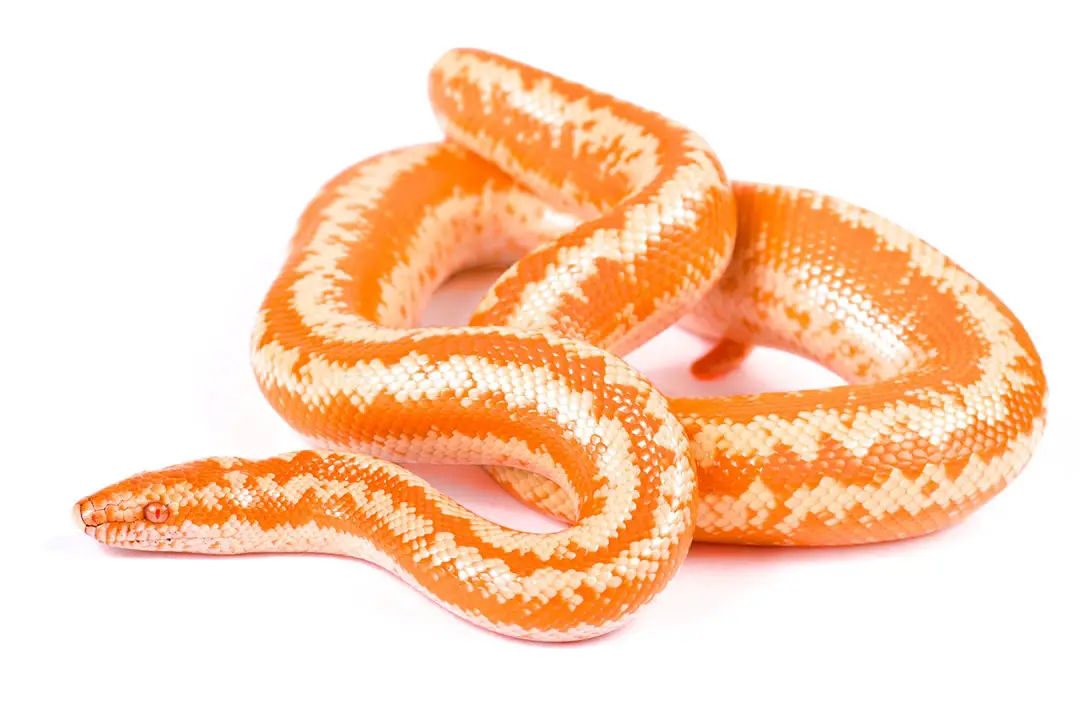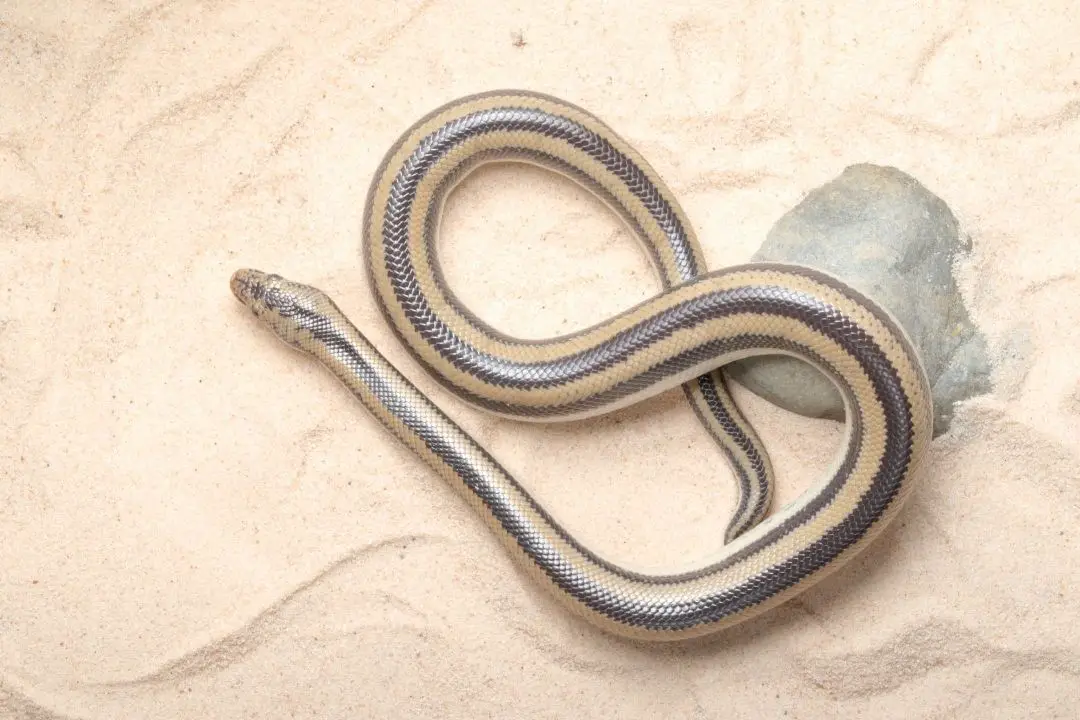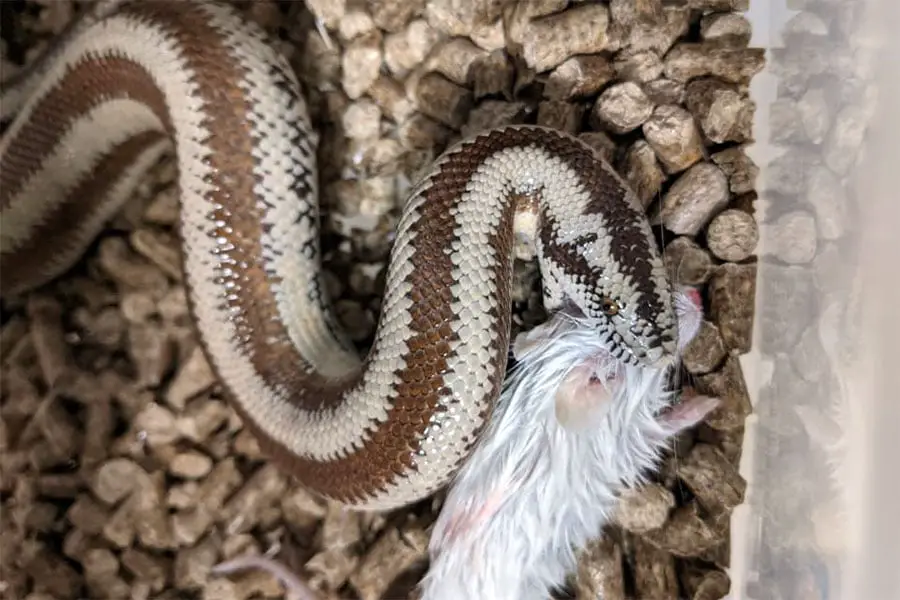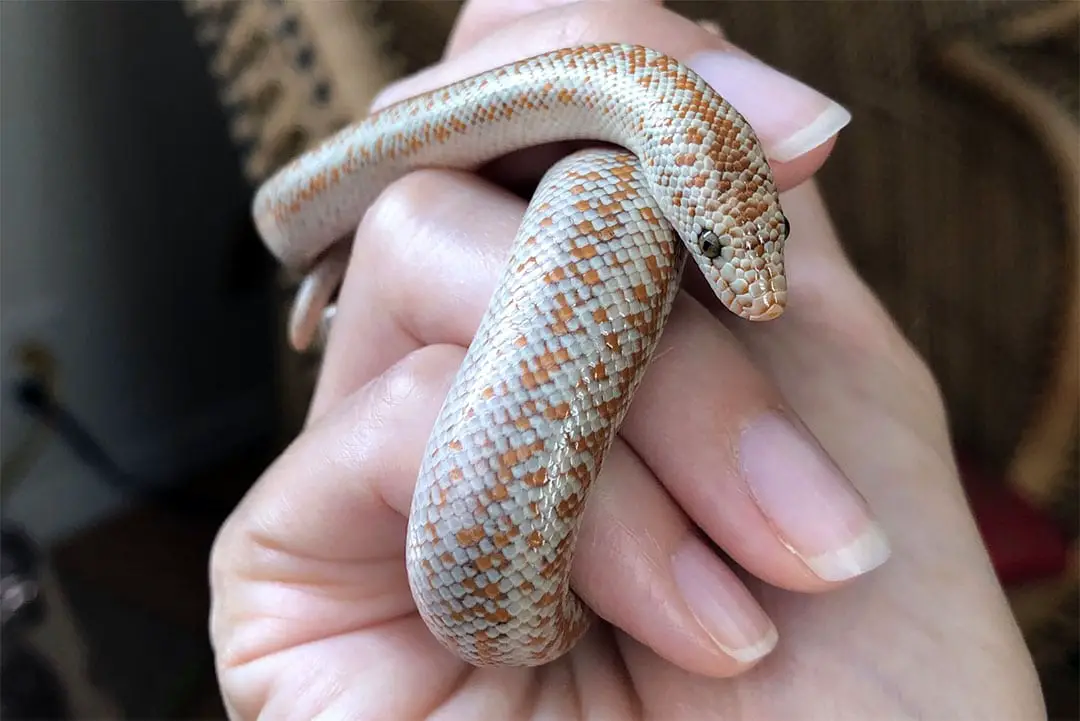The rosy boa (Charina trivirgata) is a small constrictor snake native to Southern California, southwestern Arizona, and adjacent areas of Mexico.
These snakes are becoming more common in the pet trade (see my rosy boa care sheet), which means unique color and pattern variations called morphs are available.
This list will show you the variety of snakes out there.
- 1. Albino Whitewater
- 2. Morongo Basin Axanthic
- 3. Albino Coastal
- 4. Hypomelanism
- 5. San Felipe Ghost
- 6. True Ghost
- 7. Albino Arizona Chocolate
- 8. Borrego Anerythristic
- 9. Albino Borrego
- 10. Coastal Anerythristic
- 11. Atkinson Albino Ajo
- 12. Pioneertown Anerythristic
- 13. Mono-Stripe Albino
- 14. Carlson Snow
- 15. Triv Albino
- 16. Snowwhite Snow
- 17. Picasso
- 18. Matrix Albino
- 19. Coastal Limburg Snow
- 20. Pearl
- 21. Smith Snow
- 22. Ivory
- Conclusion
1. Albino Whitewater
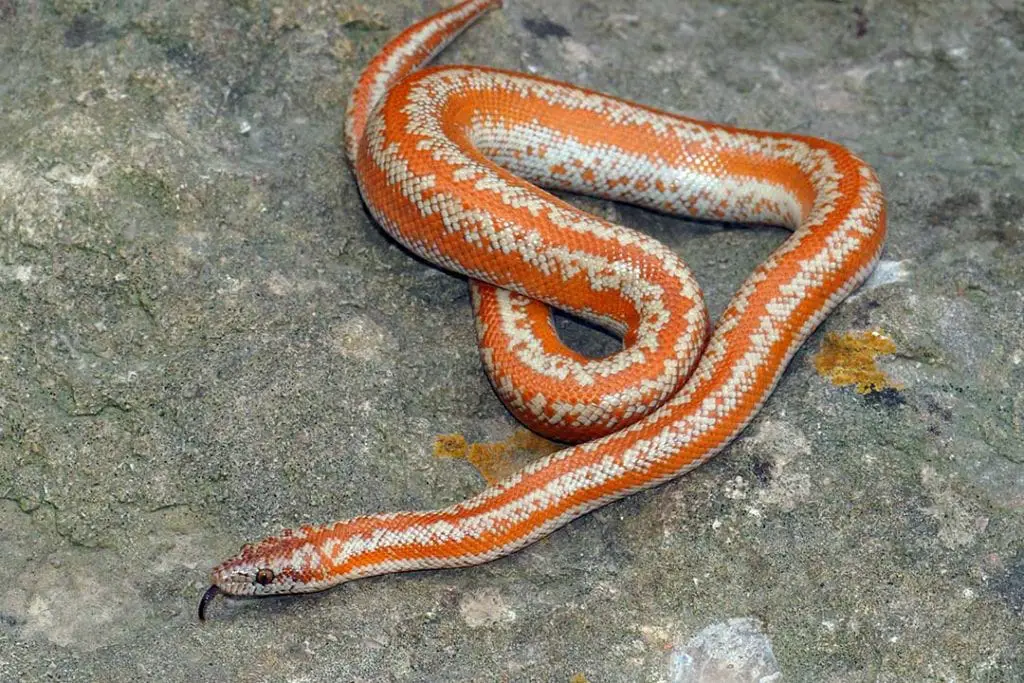
This is a morph produced from wild-caught snakes found near Whitewater Canyon.
This albino morph replaces the normal grayish blue background with a creamy white color. The stripes are also a vibrant orange instead of the typical copper.
These snakes frequently have yellow eyes. There are many strains of albino rosy boas and each can have a unique appearance.
2. Morongo Basin Axanthic
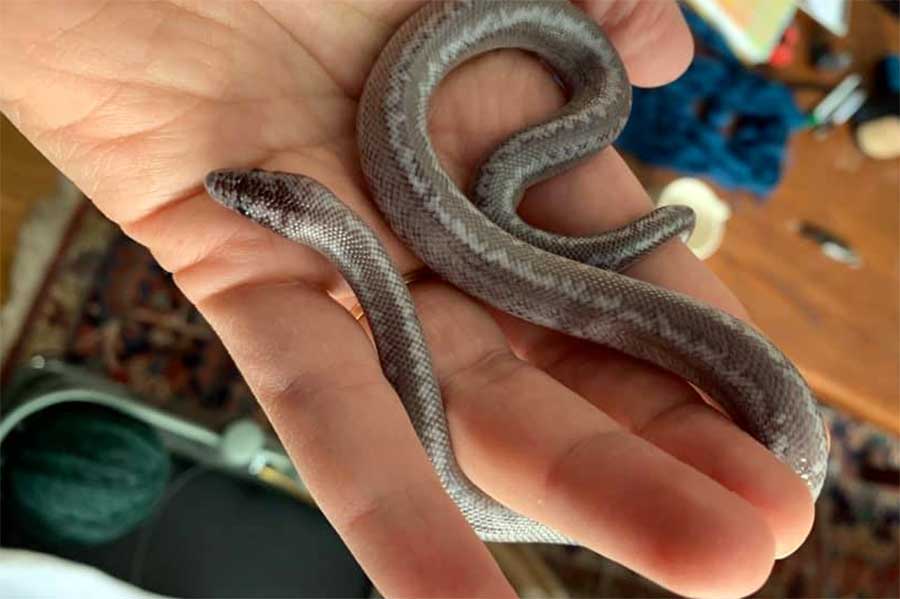
This is a rare morph where the snake lacks yellow or some red pigments. These snakes are gray toned compared to normal rosy boas.
They are named for where the original stock that carried the gene was found.
3. Albino Coastal
This strain is also called the Limburg line after person who developed the line. The original snake was collected from the Temecula Valley in Riverside County.
These snakes have bright orange stripes or speckles over a white to light yellow background. They all have red eyes, separating them from other lines
4. Hypomelanism
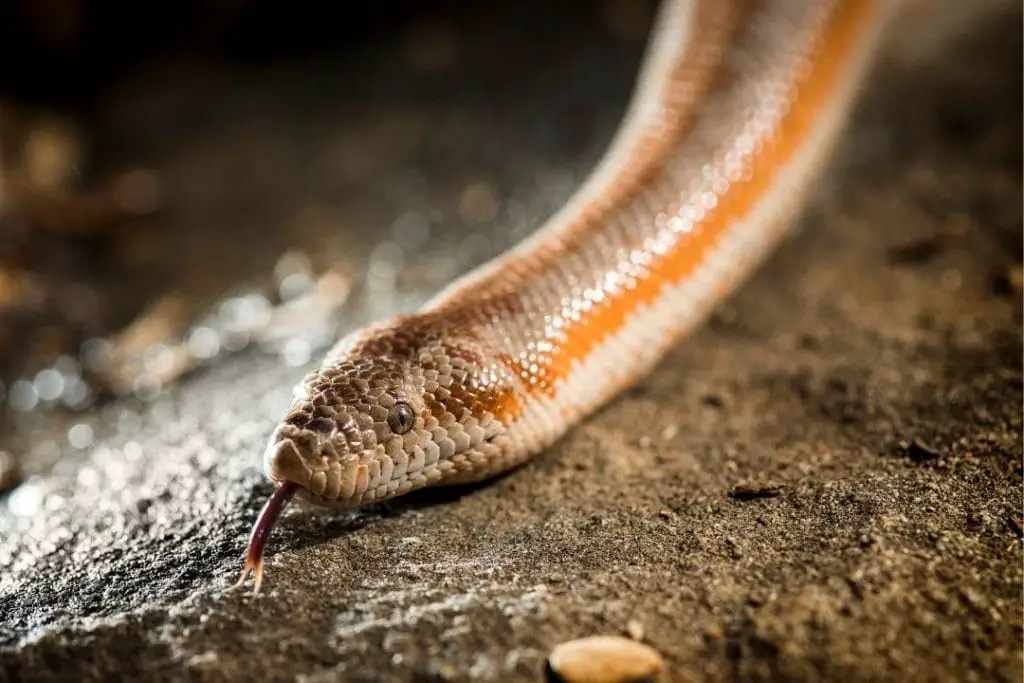
This morph is similar to albinism, but it still has some melanin unlike albinism where it is not present.
Snakes with this will be lighter than normal type snakes but not as light as any of the albino lines.
5. San Felipe Ghost
This morph was created by selectively breeding lighter snakes together.
Modern examples have light cream as a background color with light tan striping. Some animals may lack patterning entirely. The eyes are typically gray with a green tint.
6. True Ghost
This morph was produced by breeding anerythristic snakes with the San Felipe ghosts. These snakes have a gray background with slightly darker stripes.
7. Albino Arizona Chocolate
This albino strain was produced entirely in captivity from normal looking parents. The parents were from the Harquahala Mountain locality and produced albino offspring.
The snakes have wide, bright orange stripes on a light yellow background. The eye color is light gray.
8. Borrego Anerythristic
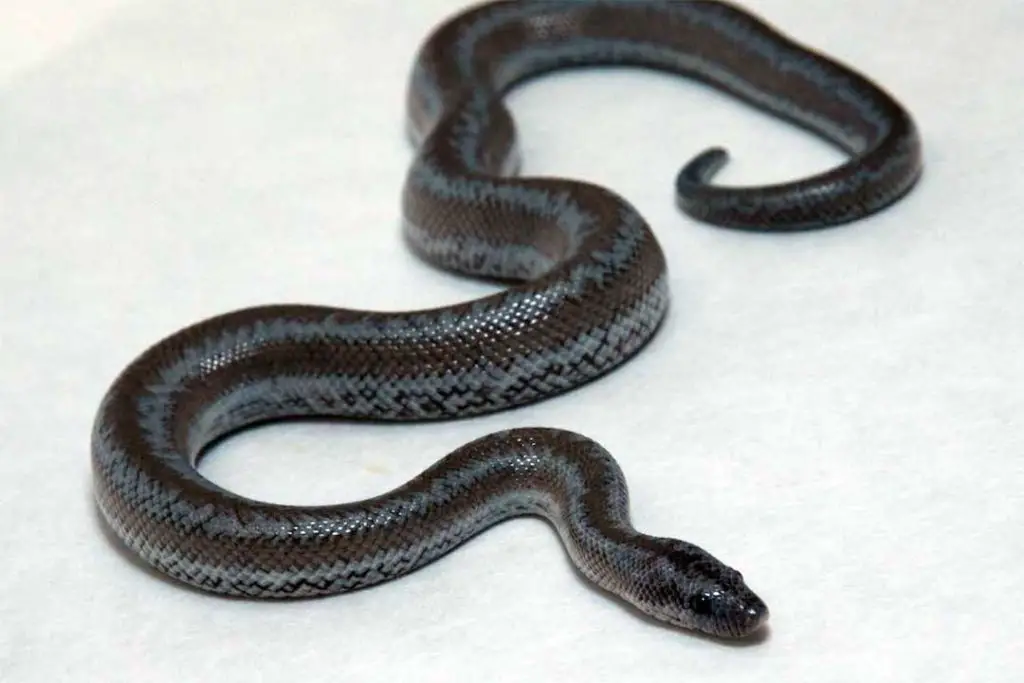
This snake was originally found in the wild near the lower Borrego. These snakes have a dark gray-blue background color with a brownish purple stripe and dark black speckles.
They have very dark eyes. Babies are only slightly darker than normal siblings, but the dark eyes help tell them apart.
9. Albino Borrego
This line was found from multiple snakes collected from the wild in the same area. They appear similar to the albino Whitewater, but it is unknown if this is the same gene causing it.
Many lines of albinism are caused by different genes. They are typically not compatible since albinism is a recessive trait.
10. Coastal Anerythristic
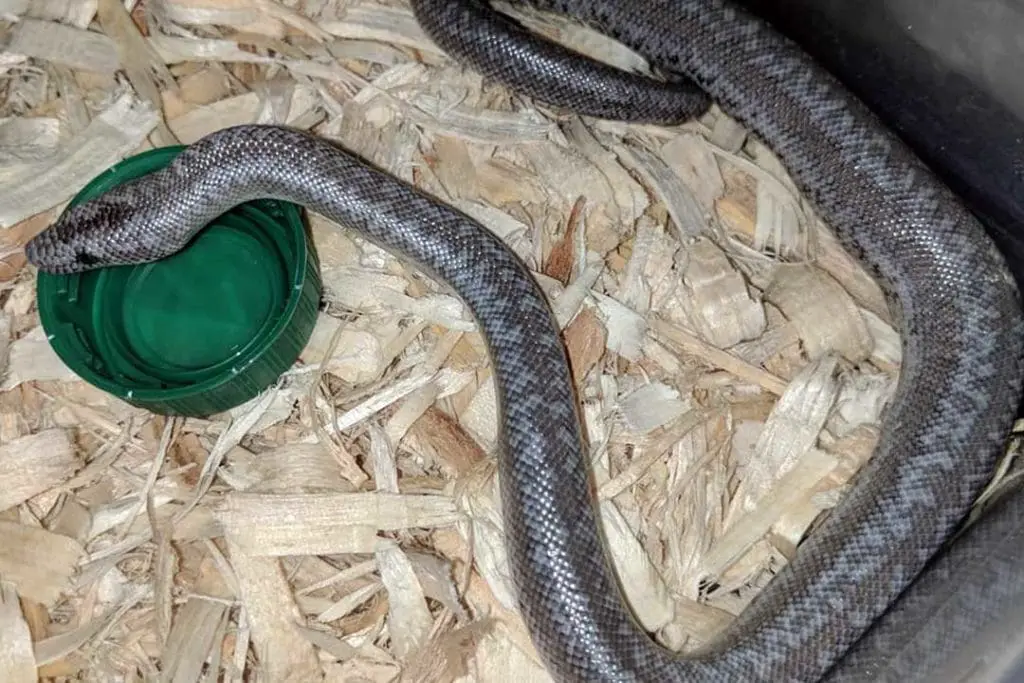
This line was proved out at the same time as the albino coastal and by the same person.
The initial wild male had a blue tint to it. The snakes with this gene have a gray-silver background with darker stripes and speckles.
This is likely to be an axanthic gene since it can produce an all-white snake when bred to an albino snake, but the original name has stuck. It is compatible with the Borrego anery.
11. Atkinson Albino Ajo
This is a very new line since the first snake was caught in the wild as a juvenile in 2018. Breedings have just started, so they are not really available. These snakes have a tan and brown color compared to the much darker wild type.
12. Pioneertown Anerythristic
This morph was produced entirely in captivity from a pair of normal pioneertown snakes. They have a light gray-silver background with very slightly darker striping that is a brownish purple. They have blue eyes with a black pupil.
13. Mono-Stripe Albino
This is a selectively bred morph. It was created from the coastal albini and was selected to have a reduced or absent lateral stripe.
There may be scattered orange scales or a faint lavender on the sides, but the only solid stripe present will be on the back in good examples.
14. Carlson Snow
This morph was names for the breeder who developed it. A Borrego anerythristic snake was bred to a Whiteater albino to create the first recognized snow morph in the species back in 2001.
They appear slightly lighter at birth than albino siblings with dark eyes.
The adults have a pearlescent light cream color with peach colored pigment in the stripes and speckles.
15. Triv Albino
This was created by breeding the Whitewater albino to black-striped Mexican rosy boas. Eventually, the albino form was produced. They have lavender stripes on a yellow background as babies. The stripes tend to become brown as the snake ages.
16. Snowwhite Snow
This pure white morph was first produced in 2005. The Morongo anery was bred to a Whitewater albino to produce the foundation stock for this morph.
The combination created a pure white snake that is born a solid color. Adults may gain a faint pattern as they age. They have a black iris with a red pupil.
17. Picasso
This morph was created by combining multiple local colorations with the albino gene. These snakes have three lilac stripes bordered by pastel yellow.
The lilac can become a light green in adults. The eyes are typically red. Since this morph requires the albino gene, this is a recessive trait.
18. Matrix Albino
The first matrix albino was produced in a litter with two picasso morphs, one normal, and the unusual albino. They have the same colors as a normal albino with a mottled pattern. Many snakes look pixelated.
19. Coastal Limburg Snow
This morph was produced from the coastal albino and anery genes. It produces a white snake that may gain layers of pigment as it ages. They have red eyes.
20. Pearl
This snake was found after breeding a double het snowwhite female produced three separate snakes with this appearance. The trait likely is related to the axanthic Morongo Valley rosy. The snakes have an iridescent pearl background with the pattern in a light gray outline.
21. Smith Snow
This is the newest snow line. They were produced with the Pioneertown anery and coastal albino genes. They have red eyes and a brighter white with less patterning than other snow lines.
22. Ivory
This morph was created by careful breeding. It created a solid white snake with red eyes. It has two broken yellow stripes going down the body.
I am missing a few images for some of these Rosy Boa morphs 🙁
I’m looking for the last images, if you are a breeder or own one of these morphs, Do you have an image ? If so please send it to me on facebook for a mention!
Conclusion
We hope this has given you an idea of the many wonderful rosy boa morphs. This snake still has plenty of room to work with to create amazing animals!
If you know of any new moths that aren’t on this list, please leave a comment below! If you have any other questions or comments, we would love to hear from you.
